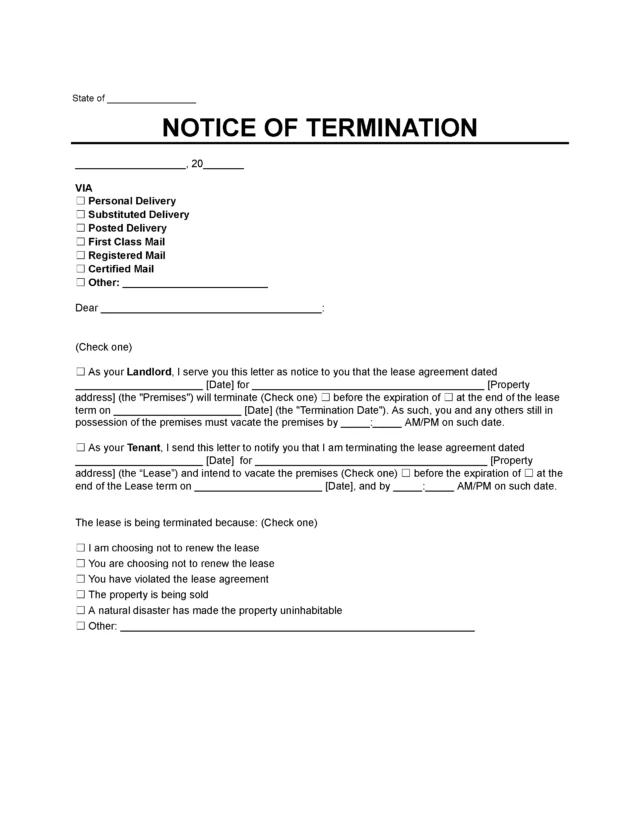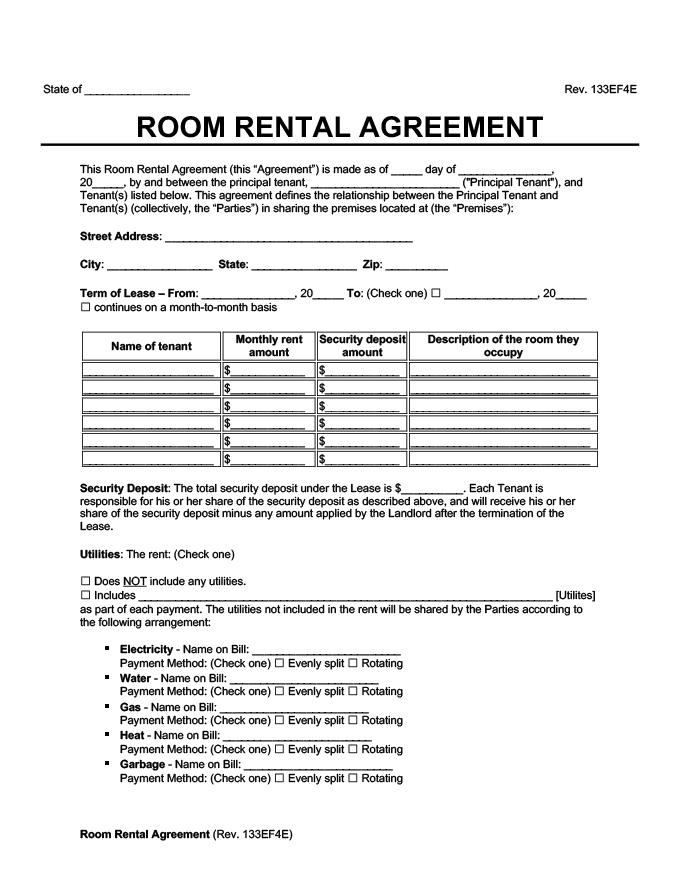What Is a Room Rental Agreement Form?
A room rental agreement form is a contract for renting a single room in a shared home. It’s common in roommate setups, student housing, and co-living spaces. You’ll also see it used in sublets.
The agreement lists the rent, due date, and any security deposit. It also explains how utilities are split and who pays for what. You’ll usually find rules for shared spaces like the kitchen and bathroom, along with sections about guests, quiet hours, and cleaning duties.
It’s not the same as afull lease for an entire unit. A room rental agreement focuses on shared living, where the renter gets one room in a home or apartment. It works well for short-term stays or when someone moves in with a main tenant who already has the lease.
Do I Need a Room Rental Agreement Form?
You don’t legally need a room rental agreement form in most cases, but it’s a smart idea to have one. A written agreement gives both sides something to fall back on. Without one, handling unpaid rent, sudden move-outs, or damage can be quite challenging.
That said, laws surrounding room rentals vary depending on where you live. Some states limit security deposits, require written leases for longer stays, or set rules for how much notice you need to give. Before writing your agreement, take a moment to check your state’s guidelines in the chart below.
- Alabama
- Alaska
- Arizona
- Arkansas
- California
- Colorado
- Connecticut
- Delaware
- District of Columbia
- Florida
- Georgia
- Hawaii
- Idaho
- Illinois
- Indiana
- Iowa
- Kansas
- Kentucky
- Louisiana
- Maine
- Maryland
- Massachusetts
- Michigan
- Minnesota
- Mississippi
- Missouri
- Montana
- Nebraska
- Nevada
- New Hampshire
- New Jersey
- New Mexico
- New York
- North Carolina
- North Dakota
- Ohio
- Oklahoma
- Oregon
- Pennsylvania
- Rhode Island
- South Carolina
- South Dakota
- Tennessee
- Texas
- Utah
- Vermont
- Virginia
- Washington
- West Virginia
- Wisconsin
- Wyoming
Use a Room Agreement to Avoid Legal Gray Zones
A written room rental agreement keeps you on firm legal footing. Many states ban self‑help evictions, like changing locks or cutting utilities. Because of that, use your agreement to set notice periods, timelines, and next steps so you follow the court process and avoid lockout claims.
How to Write a Room Rental Agreement
Shared living works best when everyone knows the ground rules. Here’s how to write a room rental agreement form that sets clear terms and keeps everyone on the same page.
1. Start With a Template
Use Legal Templates’ free room rental agreement, available in Word or PDF. It’s easy to edit and covers all the basics. Fill it out, print it, and get it signed to keep things clear from the start.
2. List the Property and Room Info
Along with the property’s full address, describe the specific room being rented, such as the upstairs bedroom or the basement suite. This is especially important if the home has multiple tenants.
3. Add Names and Contacts
List everyone involved in the room rental agreement. Include the full name of the landlord or main tenant offering the room and the full name of the person renting it.
If the space will be shared, include contact details for both parties to keep communication open and avoid confusion about shared spaces, house rules, or payments.
4. Set Boundaries for Shared Living
Define which parts of the property the tenant can use. This usually includes shared spaces like the kitchen, bathroom, and laundry room. If any areas are off limits, such as a private office or storage room, be sure to mention them.
Tenancy Can Depend on Daily Use
In some places, judges look at how the space is used and the permission you gave. For example, in 2023,Georgia’s Supreme Court said tenancy turns on whether someone uses the space as a home with the owner’s permission. Listing the room, shared areas, and house rules shows intent and lowers the risk of disputes.
5. Explain How Utilities Are Shared
List which utilities are included in the rent, such as Wi-Fi, water, or electricity, and which ones are not. If some bills are separate, explain how they will be handled. In many shared homes, one person pays the bill and the others reimburse their share via bank transfer, payment apps, or another agreed-upon method. Make it clear:
- Who is responsible for paying each bill
- How others will contribute, such as with a flat monthly fee or by dividing actual usage
In shared homes, clear utility terms help avoid late payments, misunderstandings, and tension between roommates.
6. Set House Rules
Some landlords set house rules upfront. Others let tenants sort them out together. Either way, having them written down keeps the peace. You might include:
- How many overnight guests each person can have each month
- Whether parties need approval or aren’t allowed at all
- Quiet hours, especially for early mornings or late nights
- Shower schedules if there’s only one bathroom
- Kitchen rules, like labeling food
- Pet access to shared spaces, if pets are allowed
- Where people can smoke (usually outdoors only)
- Alcohol rules in common areas
Setting clear boundaries in your room-for-rent agreement can help reduce friction between roommates.
7. Outline Chores and Maintenance Roles
Some landlords also outline cleaning responsibilities in a room rental agreement form. If you decide to include them, be clear about:
- Which areas tenants must keep clean, like the kitchen, bathroom, or hallway
- If there’s a cleaning schedule, rotating chores, or each person handles their own mess
While it’s not always easy to stay on top of a cleaning routine, it’s better to set expectations from the start. And while you’re at it, clarify who handles repairs. In most cases, the landlord deals with major issues, but tenants are expected to fix what they break.
Use House Rules to Avoid Legal Trouble
Some cities and states expect landlords to keep shared spaces clean, safe, and livable. That includes cities like San Francisco and Seattle, as well as states like Washington, California, and New York. Adding house rules to your room rental agreement shows you’re managing the property responsibly and helps you stay in line with local and state requirements.
Room Rental Contract Sample
Take a look at the room rental contract sample below. When you’re ready, you can customize and download the full free room rental agreement template in PDF or Word format.









